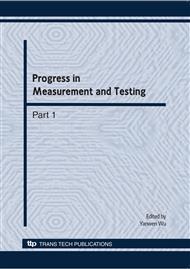p.1066
p.1070
p.1075
p.1080
p.1086
p.1092
p.1097
p.1103
p.1109
An Experimental Study of Hard Dry Milling Based on Multi-Sensor Process Monitoring and Analysis
Abstract:
This paper aims to collect the acoustic emission (AE), the vibration and the temperature signals produced in the hard dry milling of the die steel by using a signal collecting system based on multi-sensor and virtual instrument. Then the signals are processed by the wavelet transform and the wavelet packet transform. So we could pick up some regular pattern which could reflect the characteristic of the machining process from the results. The cutting parameters are set with single factor method and the experiment primarily focuses on researching the effect of changing the cutting parameters on the three signals mentioned forward. Through the experiment, some conclusions could be drawn as follow. In the process of the die steel’s hard dry milling, the spindle speed has a great effect on the AE signals. The temperature is mainly involved with the spindle speed and the depth of cut. The vibration signals have any clear pattern when the cutting parameter changes, but the energy of the vibration signals concentrate mostly on the first frequency band. Furthermore, the process of the hard milling is more stable.
Info:
Periodical:
Pages:
1086-1091
Citation:
Online since:
May 2010
Authors:
Price:
Сopyright:
© 2010 Trans Tech Publications Ltd. All Rights Reserved
Share:
Citation:


